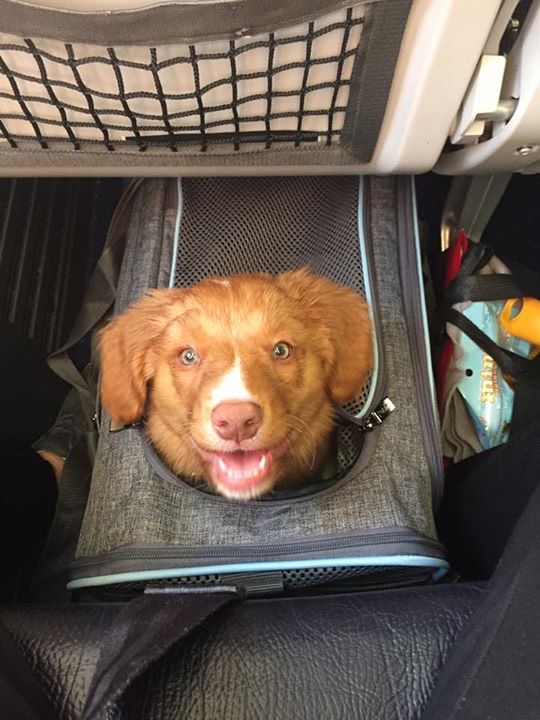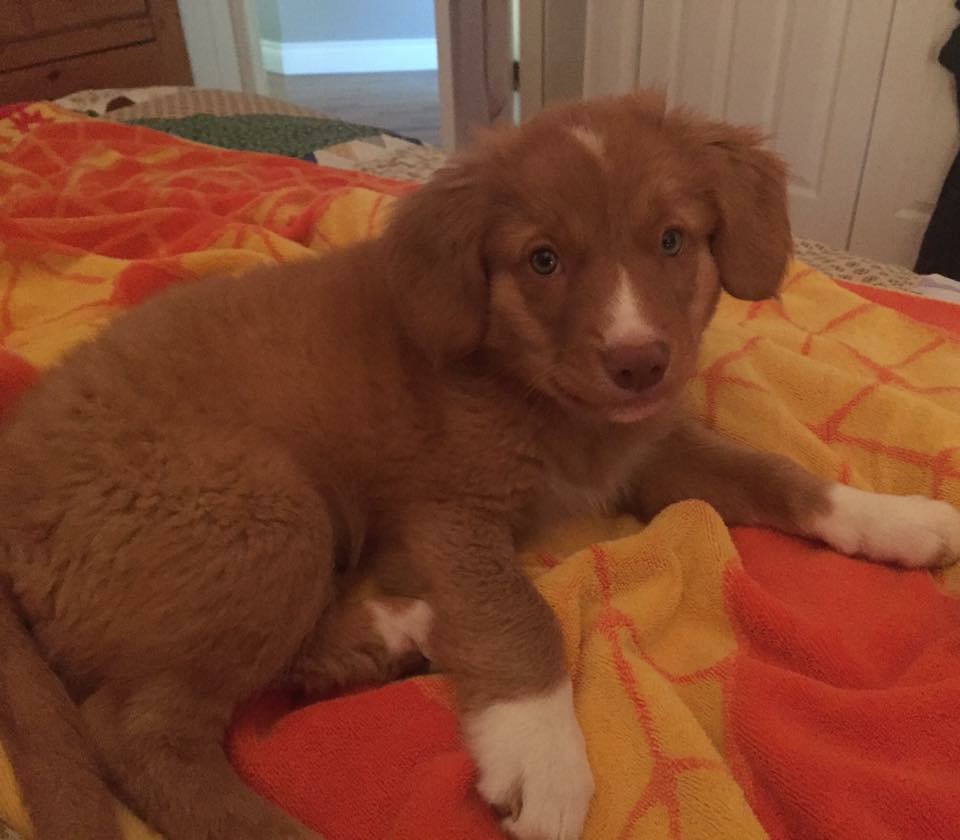Feedback from brand new Daintree owners often includes big stress around leaving the puppy alone. Tollers can scream and howl and make a major fuss about being solo without siblings, me, mom, and their dog friends here. Nothing is familiar to them yet in their new homes. Parental guilt (and headaches) kick in. A panicky text, call or email comes my way.
I work on many things with them as it is and am working on ways to improve their self soothing abilities in preparation for being at home alone in the future. However the environment I offer is familiar, the scent of their mom is everywhere. In my household, they are also never completely alone so I cannot easily replicate a new environment for them here.
Firstly, it is very unnatural for a dog to be alone, let alone a puppy. Forgive the pun. Dogs are social and gather together in packs such as wolves when left to their own devices. Housepets must acquire the skill of being solitary with your help and most are fine once they do. The transition to being good at being alone can either be quick and minorly uncomfortable or prolonged and painful.
Factors involved-
Puppy's age
Environmental elements (sound, light, room temperature, type and size of containment being used)
Physical comfort
Level of boredom
Energy level at the time of being left alone
I do not recommend leaving the puppy completely alone for any significant period of time in the first few days, and up to a couple of weeks is ideal. There are already so many changes going on for a baby dog to adapt to: a brand new home, new scents, new foods, having to start all over with relationships to complete strangers in the form of humans, possibly other dogs or cats, etc.
Go easy on your puppy. If you make this transition as supportive as possible, the rewards will be lifelong.
Suggestions:
Take time off work
Replicate the Daintree enclosure setup. Create a comfortable environment with adequate passive enrichment, light, and climate control.
Leave on sound such as white noise, faint TV sounds, low music or talk radio.
Hire a professional sitter to drop in while you work.
Ask trusted friends, neighbors or family to occupy the puppy for you when you can't be there.
Sleep with your puppy.
Bring your puppy to the bathroom while you shower. I'm not joking- in a couple of weeks time it won't be necessary.
Play peekaboo games. Tire the puppy somewhat before trying this, with play, moderate exercise or training games. Provide a nice chew (knuckle bone, filled hoof, dehydrated duck foot) and leave the room for 2-3 seconds, then reappear with a tasty treat like a bit of cheese or meat. Repeat. Every couple of returns, offer no treat, just a pet or praise. Prolong the time away. If puppy starts to despair, come back and sit with her, cage between you and comfort from outside. Release or pick up only when she is quiet, or you will reinforce a crying puppy and it will get worse.
Give your puppy time. Within a couple of weeks, they are usually completely comfortable in their new environments and mom, siblings, me and the kennel are a distant memory. The problem is solved. Just be sure to nurture them along until this happens.










